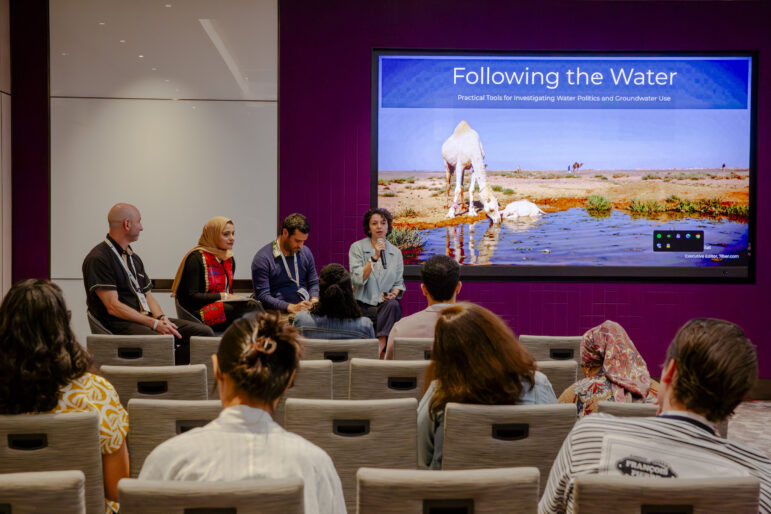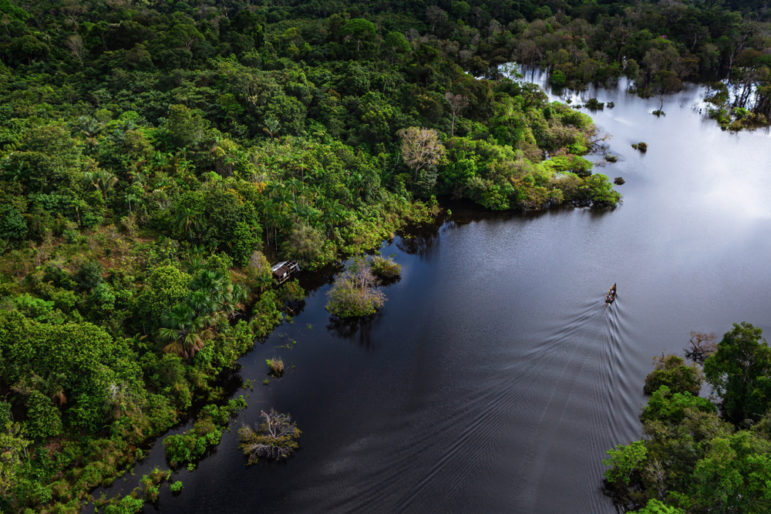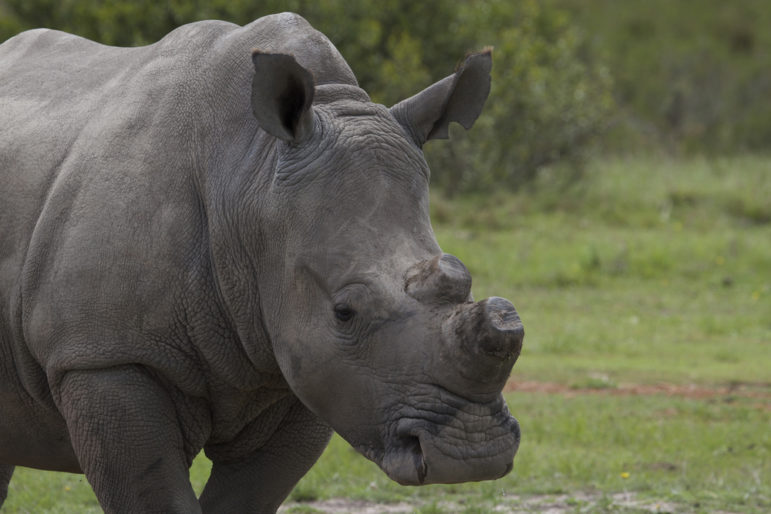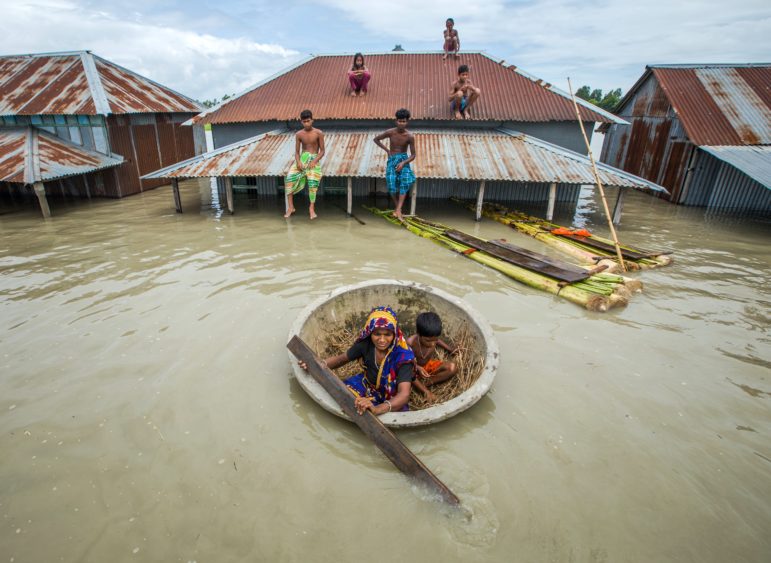
Climate GIJC25
Overcoming Four Big Challenges to Investigating the Water Crisis
Journalists reporting on water scarcity often face a lack of transparency, limited access to sites and sources, unwieldy data, and a resistant media environment.

Journalists reporting on water scarcity often face a lack of transparency, limited access to sites and sources, unwieldy data, and a resistant media environment.
This guide offers reporting best practices, key resources as well as what questions to ask when investigating methane emissions from landfills and how to reduce them.

What does climate change feel like? How will your city’s climate shift, 50 years from now? Data scientist Derek Taylor explains his latest piece.

The lack of regulatory oversight of radioactive waste in the oil and gas industry has created an environment ripe for some extraordinary science and environmental journalism.
This guide provides watchdog journalists with key context and practical advice to enable better investigations of the fossil fuel industry.

The oil and gas industry is complex and notoriously opaque. But with new tools, it’s become easier for investigators to dig into this field.

New remote sensing techniques are enabling researchers to monitor how armed conflict can be a driver of greenhouse gas emissions like methane.

In this story, an academic researcher recounts his team’s investigation, published in the journal Science, that looked into the accuracy of models measuring the health of fisheries.
The negative effects from higher temperatures can be seen everywhere, offering many opportunities for investigative journalism.

Environmental reporters share tips for unraveling the mysteries behind carbon credit projects and government ties to the fossil fuel industry.
Carbon offsets are truly an international climate change story with potential for cross-border collaboration between journalists.

A legal loophole in the Clean Air Act allows air pollution to be erased from EPA statistics and regulatory decisions if the pollution was caused by “natural” or “uncontrollable” events.

GIJN convened a one-day meeting of 80 climate change journalists and experts from 35 countries to discuss the future role of investigative journalism in climate crisis reporting.
The impacts of climate change everywhere. But how to do in-depth reporting on the widespread human costs — both immediate and longer-term? Speakers from Asia, Africa, and Europe will discuss how to cover topics such as sea level rise, heat, drought, and extreme weather with an eye to the impact on humanity and the environment. […]
Hear from some of the world’s most imaginative climate change journalists. Mongabay’s Rhett Ayers Butler presides over a newsroom producing a constant stream of articles on climate change worldwide. Elisângela Mendonça recently has connected the production of the anti-aging cure collagen with deforestation in Brazil. Emilio Godoy’s multi-faceted portfolio includes investigations of gas leaks and […]
The global fight against climate change depends on the actions of individual nations — so national accountability is critical.

The crises of South America’s giant rainforest basins ignore national borders. So should journalism, writes Andrés Schäfer, in this article exploring how different outlets in the region are investigating what is happening along the banks of the region’s largest rivers.

Investigative journalism of environmental issues has grown substantially in recent years in Africa, thanks to a number of new initiatives and reporting projects.

For journalists, explaining the causes and consequences of rising sea levels is a critical and challenging assignment. To address this aspect of the climate crisis, GIJN is publishing an extensive guide to support journalists covering the impact of rising seas around the world.
For journalists, explaining the causes and consequences of rising sea levels is a critical and challenging assignment.
This edition of the GIJN Toolbox explores global databases and remote sensing resources that reporters can use to investigate local environmental threats.
This guide was written by Toby McIntosh, senior advisor to GIJN’s Resource Center. Editing was by Reed Richardson and Laura Dixon. Illustrations were created by Marcelle Louw.
From the tropics to the Arctic, Indigenous peoples are on the front lines of the climate crisis, and investigative reporting is critical to tell their stories.
This GIJN resource page aims to encourage more investigative reporting about the climate crisis. In Part 1, we begin with articles that provide concrete suggestions for investigative projects. In Part 2, we have collected challenging commentaries on how the media has handled climate change and what it should be doing better. In Part 3, we […]
With an estimated 257 million migrants in the world, migration has emerged as one of the most contentious national and international issues. GIJN has gathered resources on this topic, including: Useful sources of factual information Reporting guidelines and media criticism Information on journalism prizes (and the winners) concerning migration Examples of recent and varied stories […]